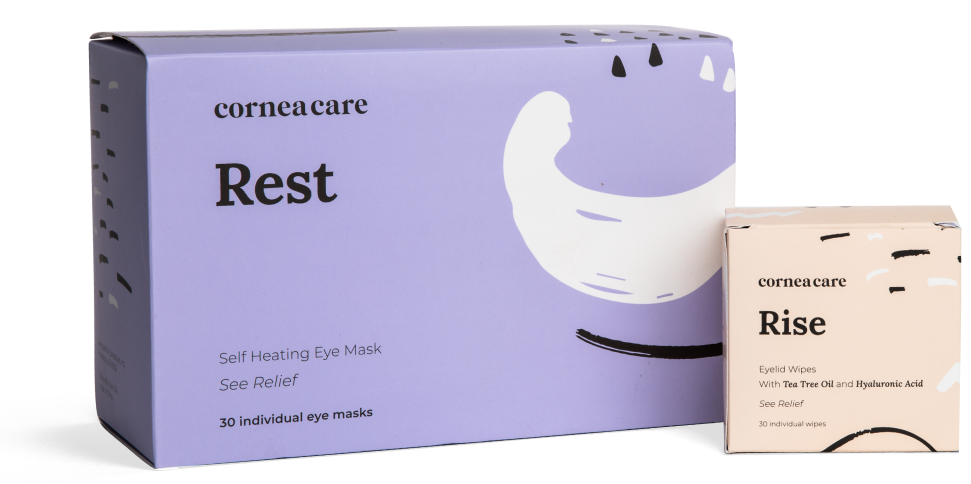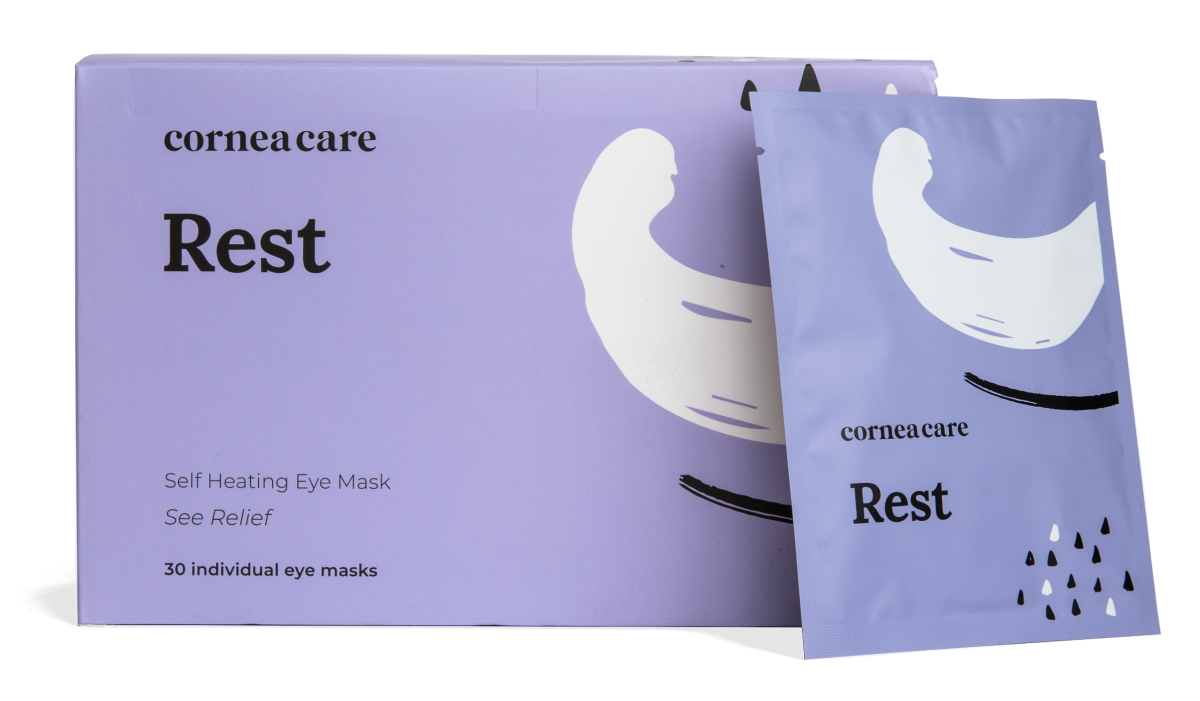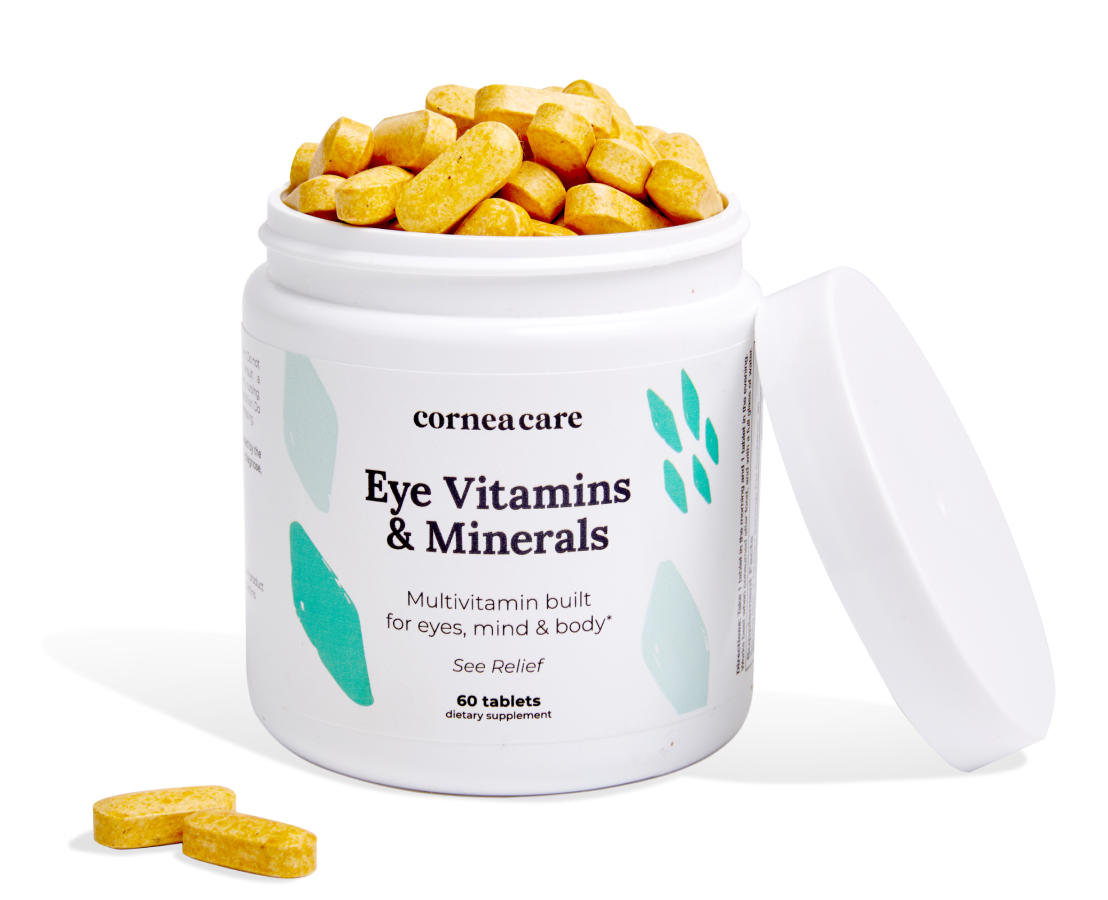What are the Latest Treatments for Dry Eye Disease?
Treatment for dry eye syndrome is important for the 30 million Americans dealing with it every day. Dry eye syndrome (or dry eye disease) happens when your eyes don’t make enough tears or when the tears dry up too quickly. This can lead to symptoms like dryness, irritation, and that annoying gritty feeling, which can really make everyday life uncomfortable.1
Stick with us to find out about the latest treatments for dry eye syndrome and some simple ways to help keep those symptoms at bay.
Key Points
- Regular eyelid hygiene, including warm compresses and eyelid wipes, is essential for managing dry eye symptoms by promoting healthy oil production and reducing inflammation.2
- New treatments for dry eye include medications like Miebo and Tyrvaya, as well as advanced therapies such as Intense Pulsed Light (IPL) and thermal pulsation devices like Lipiflow.2,3
- Lifestyle changes like adding omega-3s, staying hydrated, and taking breaks during screen time can significantly improve dry eye symptoms and overall eye health.1
Understanding Dry Eye Disease
Dry eye disease is characterized by insufficient tear production or rapid tear evaporation. It can cause discomfort and damage to the ocular surface, which includes the cornea and conjunctiva. When the eye’s tear film is disrupted, you may notice these symptoms:1
- Dryness
- Burning or stinging sensation
- Redness
- Gritty sensation
- Watery eyes
- Sensitivity to bright lights or glare
- Blurred or fluctuating vision
- Tired eyes
Let’s break down some of the main things you should know about dry eye disease to help you understand what’s going on with your eyes and what might be causing those frustrating symptoms.
- Ocular surface disease: Dry eye is a type of ocular surface disease that can lead to inflammation and damage to the cornea. Chronic inflammation can exacerbate symptoms and worsen the condition.2
- Tear film disruption: The tear film consists of three layers—aqueous, lipid, and mucin. A deficiency in any layer can lead to dry eye symptoms.
- Meibomian gland dysfunction (MGD): This condition affects the oil glands in the eyelids and is a common cause of dry eye. MGD leads to reduced lipid production and increased tear evaporation.2
- Underlying conditions: Various health conditions can contribute to dry eye disease such as:
- Rosacea: This skin condition can cause inflammation of the eyelids and contribute to dry eye symptoms.2
- Sjögren’s syndrome: An autoimmune disorder that attacks moisture-producing glands, leading to severe dry eye and discomfort.1
- Demodex blepharitis: An overgrowth of mites living on the eyelids can lead to irritation and exacerbate dry eye symptoms.2
Routine eye exams are important for diagnosing dry eye disease. Your eye doctor (optometrist and ophthalmologist) will assess tear production and evaluate the health of the cornea and ocular surface to determine the underlying causes.
Treatment Options for Dry Eye Syndrome
It’s important to understand that while dry eye disease is a chronic condition, it’s definitely treatable. There isn’t a one-and-done cure for dry eye disease though. Similar to diabetes or high blood pressure, once you have it, it’s something you’ll manage for life.
But here’s the good part: with a consistent treatment plan, you can keep dry eye symptoms under control and prevent them from interfering with your daily life.
A good treatment plan should address all of the root causes of dry eye: your eyes aren’t making enough tears, your tears evaporate too quickly, or your diet, lifestyle, and environment are playing a role. And remember, what’s good for your eyes is usually good for your overall health, too.

Foundation
Eyelid Hygiene Plan 2
Perfect for eye dryness, burning, itching, crusting/flaking of eyelashes and inflamed eyelids. Free shipping 📦.
Try today - $45
Let’s look at the different ways you can tackle your dry eye symptoms.
Eyelid hygiene
When your eyes feel dry, your first thought is to grab the eye drops, right? While artificial tears can play a part in a dry eye disease treatment plan, eyelid hygiene must take center stage.
Your eyelids play a huge role in keeping your eyes healthy and maintaining your tear film. Every time you blink, you’re refreshing that tear film that covers and protects your cornea.
Your eyelids also have meibomian glands. These oil glands help form the lipid layer of your tear film, which is super important for keeping your eyes moisturized. When your eyelids aren’t working as they should, dry eyes are almost inevitable. That’s why having a good eyelid hygiene routine is key to managing dry eye disease.
What is an eyelid hygiene routine?
For a solid eyelid hygiene routine, you need:
- Warm compress: A warm compress helps relax your eyelids and kickstarts your meibomian glands, which release the oils that strengthen your tear film.4 You can make one at home or try CorneaCare self-heating warm compresses.
- Eyelid wipes: Eyelid wipes clear away debris, crusting, or flakes on your lashes, especially if you have blepharitis or a Demodex infection.3 You can use baby shampoo on a washcloth or CorneaCare eyelid wipes.
Daily eyelid hygiene can protect your eyes from MGD and blepharitis while also reducing symptoms like redness and puffiness.
Eye drops and topicals
Over-the-counter (OTC) artificial tears are the most common first-line treatment for dry eyes. They are designed to lubricate the surface of the eye and provide immediate relief.1 When selecting eye drops, always choose preservative-free options such as CorneaCare artificial tears, as these are less injurious to the surface of the eye over long-term use.
If OTC drops don’t provide adequate relief, prescription options may be necessary. Several FDA-approved treatments are available, including:2
- Perfluorohexyloctane (Miebo): Approved in 2023 for the treatment of dry eye disease symptoms, these drops reduce tear evaporation. Side effects include redness and blurred vision, and should not be used while wearing contact lenses.
- Loteprednol etabonate ophthalmic suspension (Eysuvis, Inveltys, Alrex, Lotemax): These corticosteroids are intended for short-term treatment to reduce inflammation associated with dry eyes.
- Lifitegrast (Xiidra): This medication belongs to a class of drugs that help reduce inflammation and may stimulate tear production.
- Cyclosporine (Restasis, Cequa): Cyclosporine is an immunosuppressant that can reduce inflammation, increase tear production, and help alleviate symptoms of dry eye disease.
- Varenicline (Tyrvaya): Delivered as a nasal spray, this medication stimulates the production of tears, oil, and mucin to lubricate the eye.
- Lotilaner (XDEMVY): The first FDA-approved medication for Demodex blepharitis, these prescription drops remove debris from the eyelashes, eliminate mites, and reduce inflammation.

Rest
Warm Compresses
Perfect for eye dryness, fatigue, tearing, and puffiness of the eyelids. Free shipping 📦.
Try today - $30
Advanced devices and procedures
Other technologies have been developed to treat dry eye syndrome, offering more advanced options:2
- Intense pulsed light (IPL) therapy: The FDA-approved OptiLight and LacryStim devices deliver gentle pulses of light to stimulate the meibomian glands, reduce inflammation, and improve tear film stability.
- Thermal pulsation: Devices like Lipiflow and iLux use thermal pulsation therapy to address MGD by applying gentle heat and pressure to the eyelids.
- Autologous serum eye drops: Made from a patient’s own blood, these drops can promote healing and reduce inflammation.
- Punctal plugs: In an in-office procedure, punctal plugs help retain tears by blocking the eyelid’s drainage ducts.
- Surgical options: For severe cases, surgery to permanently close the puncta may be considered to reduce tear loss.
Your doctor will evaluate your symptoms and determine the best treatment based on your specific needs and the available options.
New developments in treatment
Ongoing clinical trials continue to explore new treatment avenues for dry eye disease. For example, research is being conducted on cenegermin (rhNGF), which has shown promise for patients with dry eye caused by Sjögren disease.4
The landscape of dry eye treatment is continually evolving, offering hope for better management strategies in the future.
Lifestyle changes
Incorporating simple lifestyle changes can significantly improve, and potentially prevent, symptoms. Omega-3 fatty acids found in fatty fish, nuts, and seeds have anti-inflammatory effects that help manage dry eye syndrome. Vitamins A, B12, C, and D also support eye health.1
To fill nutritional gaps in your diet try CorneaCare eye vitamins and omega-3 supplements.
These changes can help prevent and reduce dry eye symptoms:1,5
- Practice routine eyelid hygiene including cleansing the eyelids daily.
- Apply warm compresses to the eyelids to promote oil gland function.
- Follow the 20/20/20 rule to rest your eyes during prolonged screen time.
- Blink more often to help lubricate the eyes naturally.
- Drink plenty of water to keep your body (and your eyes) hydrated.
- Use a humidifier in rooms where you spend the most time.
- Wear wraparound sunglasses outdoors to protect against environmental irritants.
- Stop smoking and avoid tobacco smoke and other pollutants.
- If you wear contact lenses, clean them properly and consider switching to daily disposables or eyeglasses if you experience discomfort.

Multivitamin
Eye Vitamins & Minerals
A single multivitamin to address the nutritional needs of your eyes, mind and body. 📦 Free shipping.
Try today - $35
Latest Treatment for Dry Eye Syndrome FAQs
Ophthalmologists typically recommend a combination of treatments for dry eyes, including eye hygiene, artificial tears, prescription eye drops, and lifestyle changes such as using a humidifier and taking breaks during screen time. Depending on the severity of the condition, they may also suggest warm compresses, punctal plugs, or intense pulsed light therapy.
The best overnight treatment for dry eyes often includes lubricating ointments or gels, which provide long-lasting moisture while you sleep. Using a sleep mask overnight may be another good option to keep the eyelids closed and prevent tear evaporation. Some people also benefit from using preservative-free artificial tears right before bedtime or wearing moisture-retaining sleep goggles to help protect their eyes from evaporation during the night.
The best treatment for severe dry eyes depends on your individual needs and may include prescription eye drops, IPL therapy, or wearing scleral contact lenses. In some cases, surgical intervention may be necessary for severe symptoms.
Putting It All Together
Dry eye disease can really get in the way of your everyday life. The good news? There are plenty of treatment options to help you manage those annoying dry eye symptoms. From over-the-counter eye drops to more advanced procedures and medications, you have choices.
If you’re having annoying dry eye symptoms, talk with your doctor. They can help you create a personalized dry eye syndrome treatment plan that might even include the latest advancements in dry eye care. Remember, your eye health matters!
What’s Next
Check out our free Dry Eye 101 course and these other helpful articles to learn more about dry eye disease:




